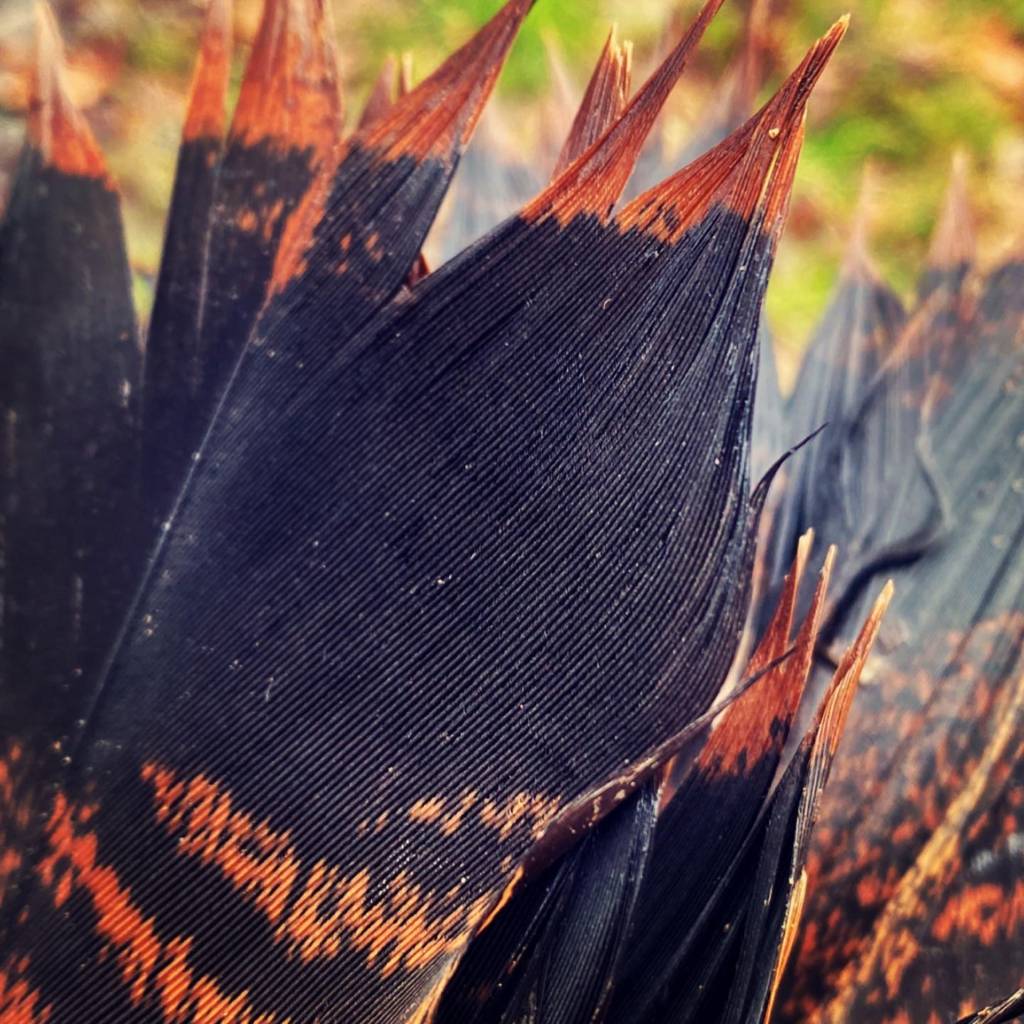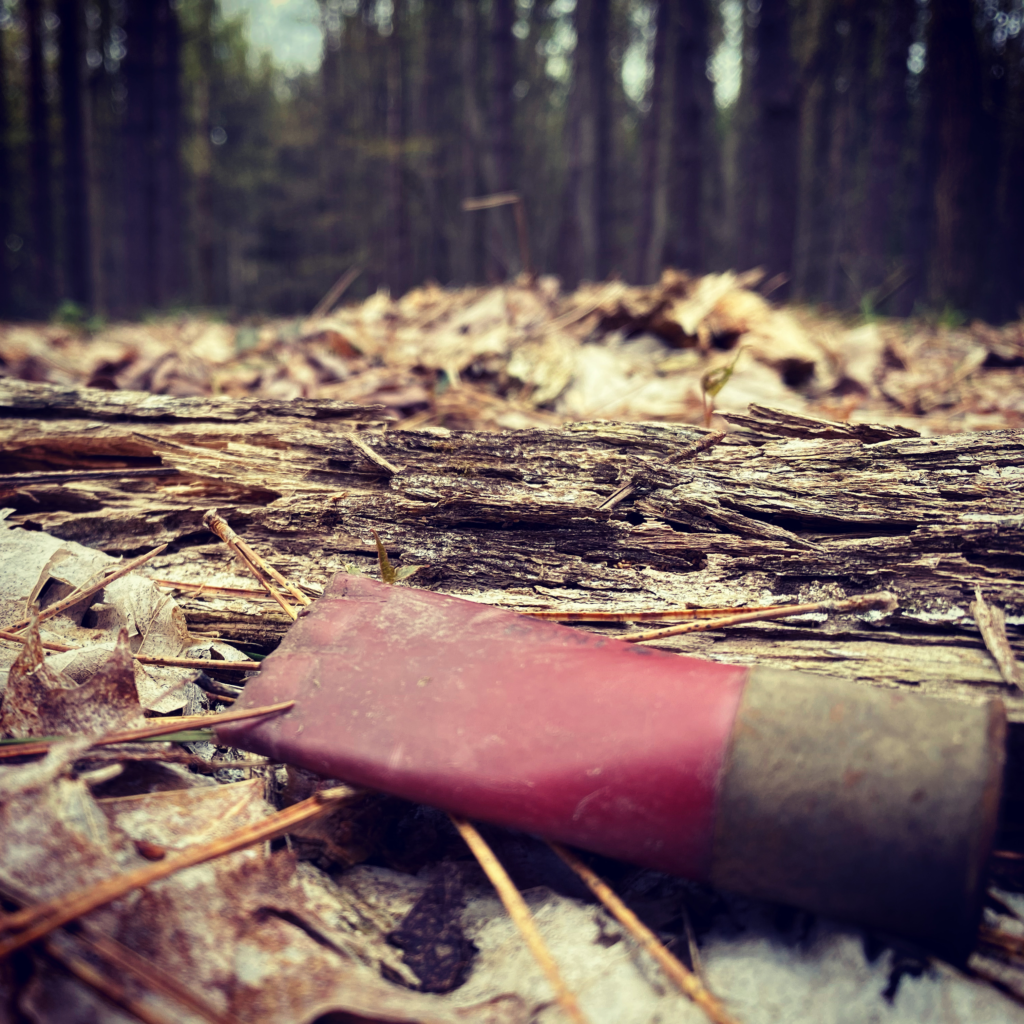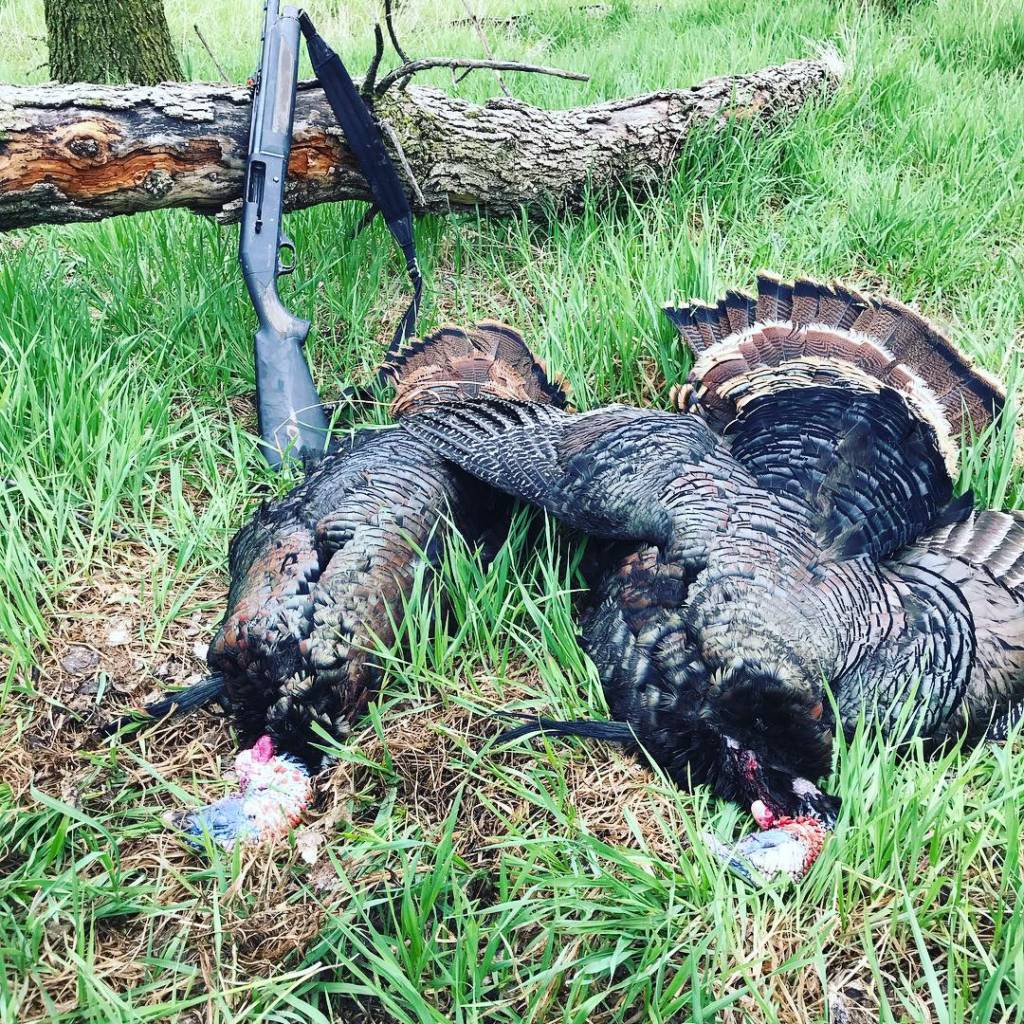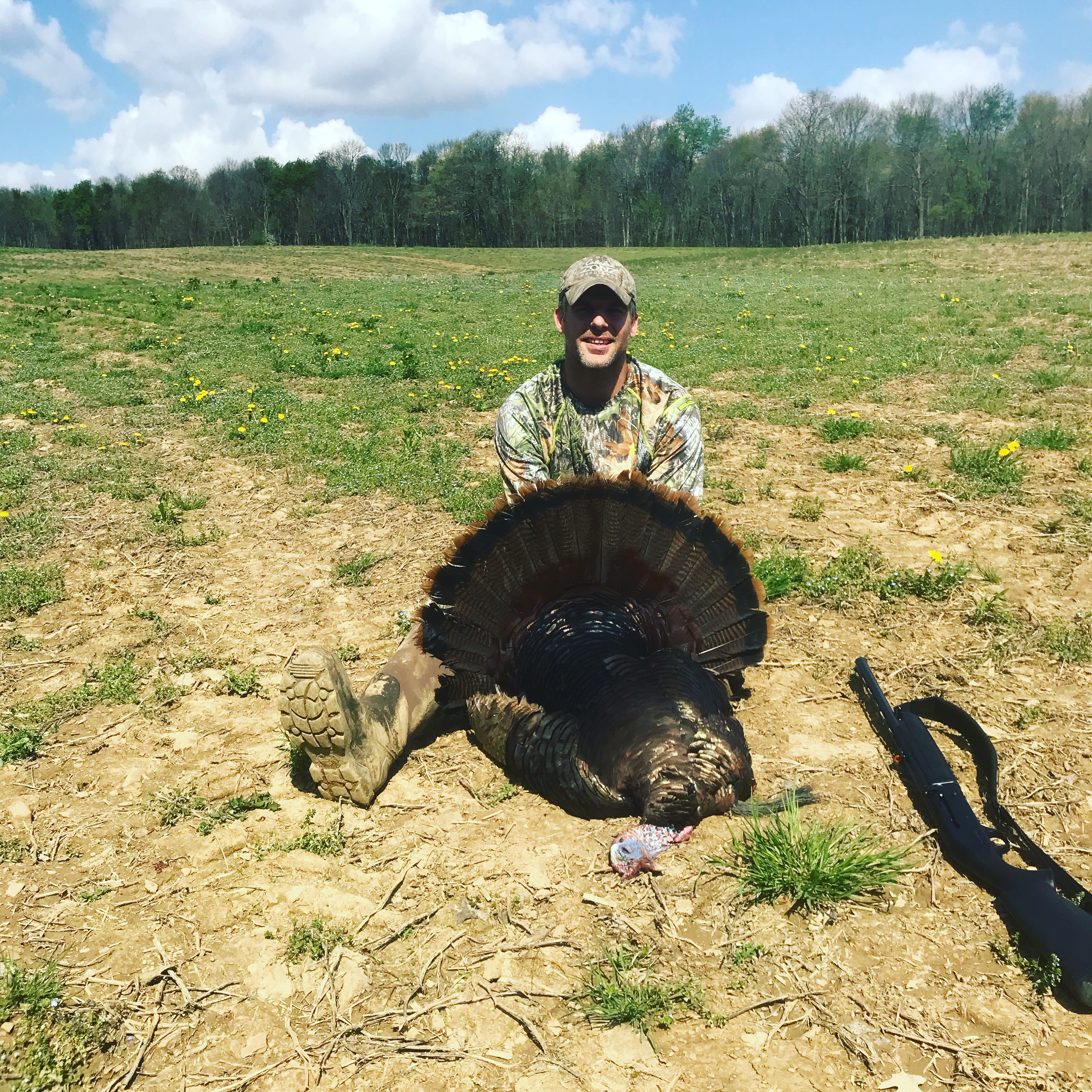
Three Birds Offering Turkey Hunting Lessons

The subliminal appreciation for hunting comes from its ability to teach the pursuer something each and every time they enter the woods. Interacting with spring turkeys is possibly the most direct educator due to the vocal and visual “grades” you receive for your calling and woodsmanship. Quickly it is figured out if what you did warranted a positive response or if you are to be left with an “I shouldn’t have done that” feeling as a newly educated bird putts off in the opposite direction. Personally I value these unsuccessful scenarios more than a hunt that ends in a notched tag only because I will remember the mistakes I made when given similar situations on future hunts.
With that said every turkey hunter has a handful of hunts, successful or not, that stick in their brain as benchmarks attested to their turkey hunting experience.
Here are three encounters I remember in great detail.
Bird on a Mission
It was my second season hunting this area of public land and the time I put in in the first year was paying off as I had located an area that routinely was occupied by a roosted tom. From his perch atop a Virginia Pine at the end of a ridge his gobbles were well heard, echoing across the ravine below. A few hundred yards from the roost area was a vacant log landing that offered an open stage for him to put on a show after flydown. The appeal of this area must be well known and multiple birds use this roost spot throughout the season. The first season I hunted this spot I hesitated to approach the open area in fear of coming within eyesight of a roosted bird, leaving me just outside of where they wanted to be.
Season two would be different, I convinced myself, as I silently sat back against a mature Poplar in complete darkness. Even though I didn’t know for sure I was confident there would be a bird occupying the ridge edge roost. A pale light illuminated the woods and I let out a few soft yelps only to be cut off by the echo of a gobblers spring notes. I waited five minutes before repeating my call and once again was rudely interrupted. He knew his girlfriend was waiting for him at the log landing so I gave him a strong dose of the silent treatment until I heard him fly down. Once on the ground he continued to let his presence be known and I figured it was only a matter of time until his strut brought him within gun range. To my surprise he stood me up. Not only did he stand me up but he gobbled the entire way in the opposite direction. Not to be outdone, I slowly worked my way through the woods behind the bird trying to coax him with an occasional call or ruffling of leaves. The tom never hesitated to answer but it became clear that he was more concerned with covering ground than any piece of tail that was obviously obsessed with him.
This one was hard for me to explain. Part of me assumed my calling wasn’t sweet enough to seal the deal much like an awkward first date. The other part of me felt like that bird had a place he wanted to be and it wasn’t the log landing as I had anticipated, like he had made up his mind that he would be traveling to a new area that morning. It is important to focus on the ladder and know that turkeys can be influenced by circumstances outside of your control. Many scenarios could have led to that hunt going the way that it did.Maybe that bird had been spooked out of its roost overnight by a predator, had been hunted in the days prior, or prioritized food or water that morning. Remember that you are only a small part of what a Bird deals with and although breeding is very important turkeys will go through many moods throughout the day. As we say its just “turkey’s being turkey’s”.

Coming In (Not) So Hot
It has long been a goal of mine to kill a Tom on a weekday before work. There are a few hunting spots close to my work building, giving me a short window to hunt to find a bird on the roost before I need to be on site at 7:00 a.m. On this particular mid-May morning I did not hear a single pre-dawn gobble but because of the lack of time I stayed put for the next half hour in hopes that something would turn up. I yelped every five minutes but no response. The time on my watch confirmed that I needed to get back to the truck and just as I started up the hill towards the road I was surprised to hear two gobbles coming from the spot I had been sitting. Using a Hemlock to hide the outline of my body I watched the pair walk circles in an attempt to find the lone hen they had been hearing all morning. With the birds out of range I enjoyed watching the situation play out until they eventually worked their way back in the direction they had come. I had dealt with silent birds before but this was a strong reminder that just because they don’t gobble doesn’t mean they aren’t listening. The other takeaway from this hunt is just how precise a turkeys hearing is. These two toms could pinpoint my exact location from what is likely a couple hundred yards away.
I had a similar experience a few years later while hunting Rio’s in Kansas. On this hunt I could hear a few distant gobbles as the sun started to rise but didn’t feel like I was “In the game”. The open terrain made it difficult to close the distance so I decided to stay put and call periodically. After 9:00 a pair of gold tipped fans appeared along the side of the CRP field I was surveying. They had also pinpointed my location from a good distance and came to the exact location of my calling. Unfortunately for them this time I didn’t have a prior work commitment.

The Field Strutter
A landowner friend had been watching this bird from his back porch for almost two weeks. As a hunter it was a very convenient relationship because from his house he could keep tabs on all his crop fields and in a sense scout for me each morning while he finished up his breakfast. This particular bird was very visible, strutting his way across the tilled up corn stubble daily as his hens orbited around him like planets do the sun. My farmer friend would call me every evening with an update that would conclude with “you need to come and kill this bird”.
Easier said than done, right? “Keep track of his hens and let me know when you start seeing him by himself” was my consistent response, having learned the hard way that a field bird with hens is extremely difficult to coax. It was the first weekend in May and “Tom Fields” was down to his last hen. I figured this was as good of a time as any as I settled in for an inevitable chess match.
He first appeared around 8:30, alone on the opposite end of the field. He undoubtedly heard my subtle calling and spotted my hen and jake decoy as he strutted his way to about 80 yards from my location. It was clear that the gobbler wanted me to come to him, but since that wasn’t an option I was left to view his dance from afar. Twenty minutes passed and he had not come a step closer. Finally he had had enough and slowly went back the way he had come, gobbling as he went. Frustrated I sat with my head in my hands for surely my hunt was over. A few minutes later a hen appeared on my side of the field with a jake in tow. I put my calls away and watched as they fed and worked their way through the topsoil without a care in the world. Eventually they too had left my field of view as the sun was nearly overhead. I checked my watch to confirm I still had an hour to hunt before the noon dismissal. I let out a few raspy yelps before returning my slate call to its pocket in my vest. Moments later a hard hitting gobble rang out in my direction and as I looked up I caught a glimpse of his fan, he was less than thirty yards away!
When I recap this hunt it is clear as crystal that the hen and jake were just as much to blame for me killing that tom as my gun was- had they not entered the field I would have likely kept calling like the desperate hen that I was. Instead I was forced to shut up. My silence spiked his curiosity and it is as if he couldn’t resist this new mystery lady that had moved into his area.In the weeks prior this bird had been the dominant breeder in the area, not accustomed to being turned down by a hen or losing an “argument”. Also, had I not killed him the first time hunting that bird the likelihood of success may have subsided. Just like the hens in his harem a gobbler can identify the sound of your calling and will recognize you as an unfulfilling breeding opportunity. I like to think that a bird will nickname his ladies, earning your call arsenal a name equivalent to “not worth my time”.

I have been in this situation more than once with field toms. Open terrain gives the bird an advantage and oftentimes ends with me packing up the decoys and heading to the truck. The takeaway here is that patience clearly does kill turkeys and while the temptation is to keep calling to a turkey that gobbles might very well push the bird further from your gun barrel.
Persistence
Lessons in the turkey woods are never ending and each bird we encounter offers a new learning experience. As surely as these three turkeys offer classic examples of behavior, the next three could react in an opposite manner. The bird wins most days so maybe the biggest take away is that we must remain persistent knowing that it might not go your way, but there is still a chance it might.









